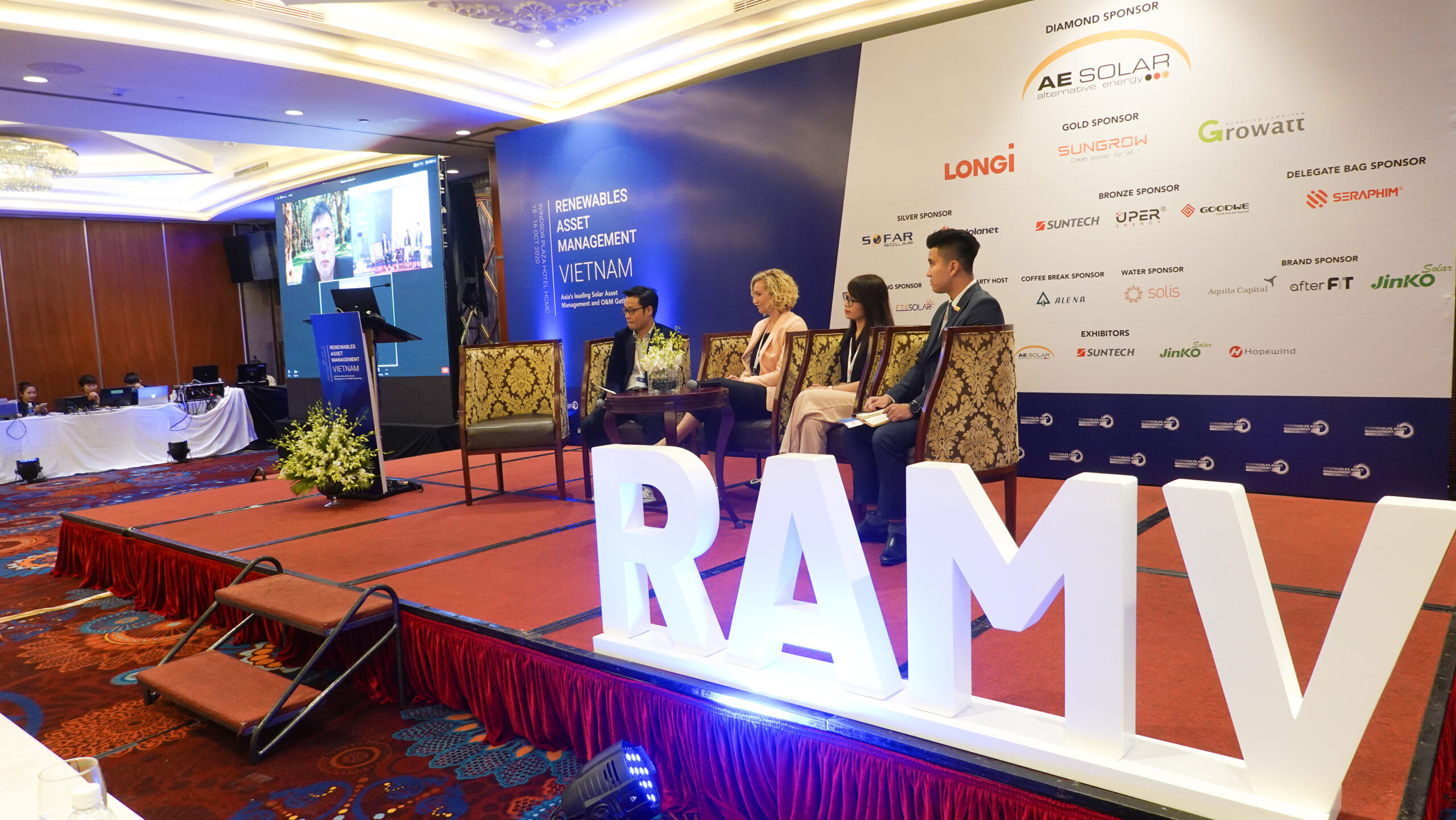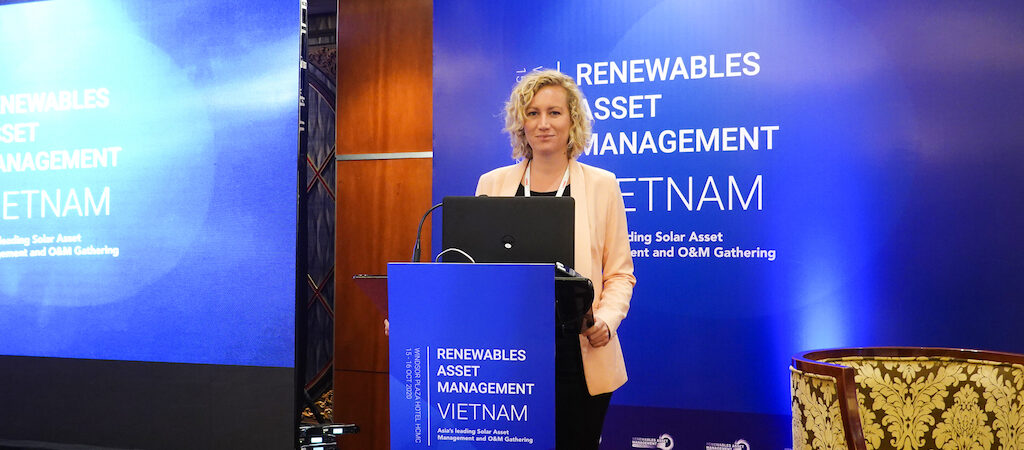The ground has been shifting for the Vietnam solar landscape as the country has become one of the most attractive choices for investors. As the home for many large-scale renewable projects, the next thing Vietnam needs is an efficient asset management solution, which can improve the generating efficiency and increase the advantage of financing due to better control of stations by asset owners.
Renewable Asset Management Vietnam is the premier event defining the new era of solar energy development in Vietnam. With hundreds of high-profile attendees, audiences got to learn about the latest developments in Vietnam solar markets, including the impact of new policy developments, asset management strategies, C&I rooftop solar, and other crucial matters.

On October 15th, 2020, Shire Oak International’s Sales Director, Ms. Clothilde Deneve, participated in the event as a guest speaker to discuss solar asset management issues in Vietnam. Sitting alongside her were:
- Ethan Phan, CEO, KTG Energy
- Eric Fang, Country Manager, GoodWe(Moderator)
- Hoang Thi Uyen, CEO, SolarBK
- Yudai Maeda, Director, afterFIT
- Koldo Gutierrez, Head of Project Management, LYS Energy
- Rohit Nanda, Head of Asia, Principal Investment – Infrastructure, SMBC
Guiding the audience through the solar development scene through the lens of a developer, Ms. Deneve addressed several concerns from the audience.
She directly disclosed the challenges a developer like Shire Oak has to face regarding the sources for investments. International and local banks are available, but the latter is much more expensive, which is not ideal in the long run. On the other hand, International banks interpret private equity usually means a grand portfolio. They won’t start investing before a package reaches at least 40 MWp.
It is also important to align expectations between international investors and the reality of the market. Vietnam is an emerging country, and things can be somewhat unexpected at times. Paperworks are not always in order. The risk can come from EVN or some not-so-credit-worthy clients, but the risk is also highly rewarded.
During the Q&A session, Ms. Deneve clarified the differences between the PPA model and the roof rental agreement. While both are mostly beneficial for clients, each has its perks, and only the client can tell what is best for them, but of course, our sales team will help you make the optimal choice.

“Local client are more fond of roof rental as this is a no brainer. PPA contracts can be complicated to understand if they are unfamiliar with the terms or don’t have a lawyer in-house,” Ms. Deneve said.
However, the more complicated option does offer much higher ROI along with other long-term benefits.
“International companies tend to prefer PPA to lower their carbon emissions while being able to experience higher financial benefits. Roof rental model will probably stop after FIT2,” the Sales Director explained.
As we are approaching the end of FIT2, FIT3 has been a hot topic for quite a while now. While it is hard to predict what the Vietnamese government has in store for the next year, Ms. Deneve briefly shared her speculation:
“Most likely FIT will remain the same in the North and decrease by 10 to 15% in the south. The market has changed massively between FIT1 and FIT2, with all of the actors (EPC, investors, etc.) re-aligning their expectations to ensure that the market will remain attractive. We can expect the same to happen for FIT3, as actors of the industry will still wish to work.”

The worst-case scenario, with the government ceasing their supportive FIT or drastically lower it, will steer the market to a whole new different path. Solar rooftop would only apply to big power consumers and factories that operate six to seven days a week. DPPA with an off-site plant would take over as soon as it became available in Vietnam.


